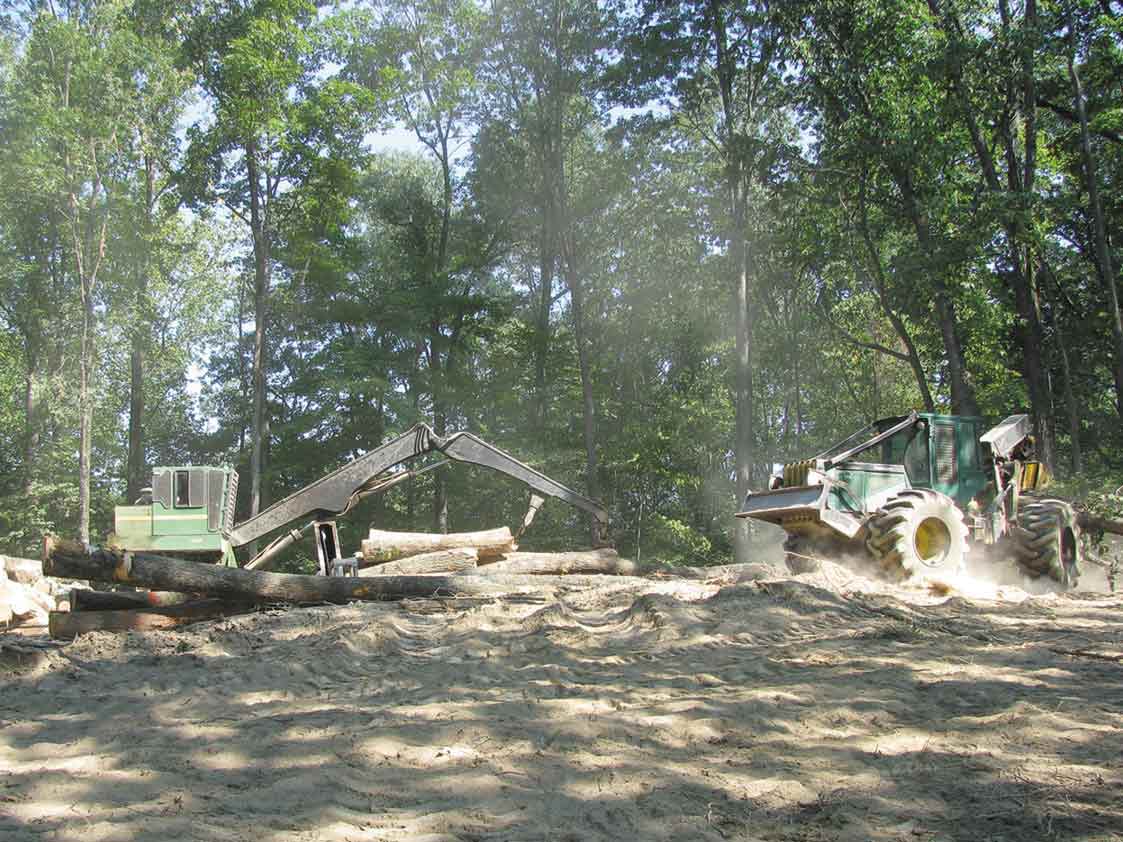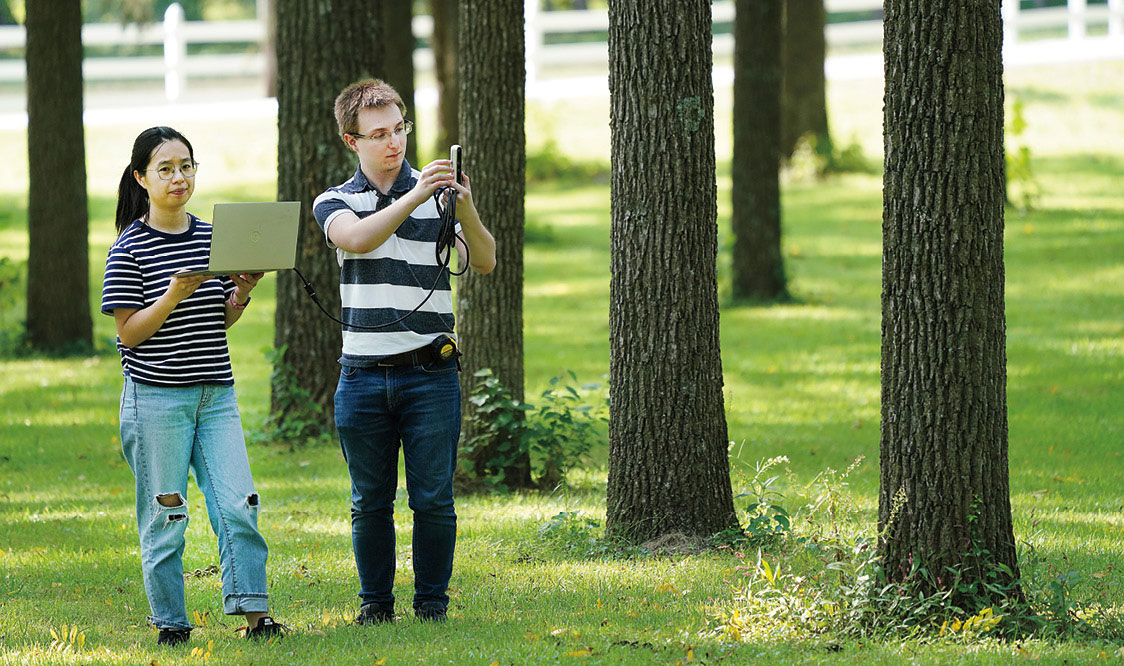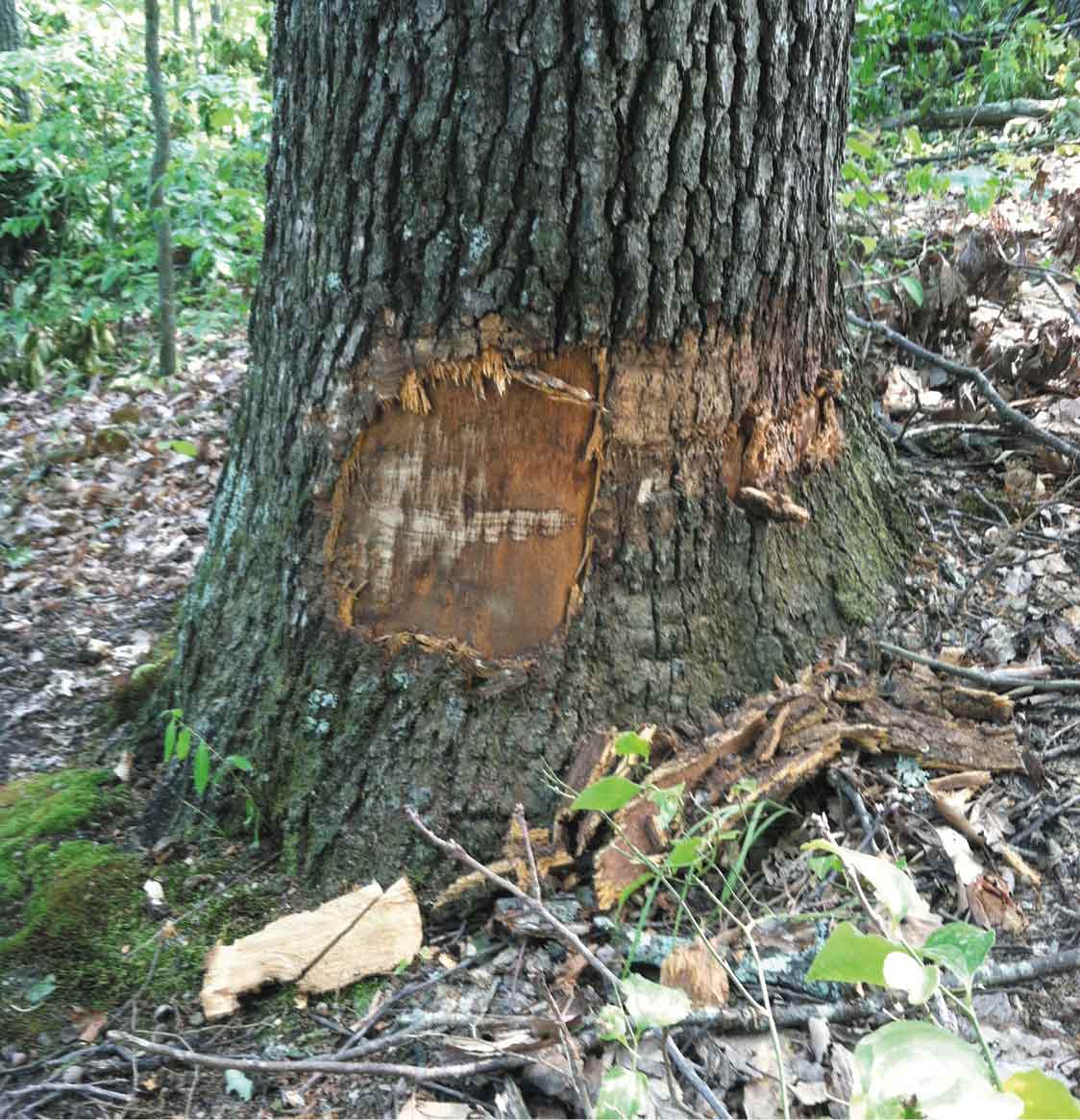Post-Harvest Blues
The night is dark and rumbly, thunderstorm warnings and tornado warnings are going off on the emergency weather radio all night. You wake to a soggy dawn and news reports about tornados in your local area. When you step out of your house, you realize that something is wrong in your woods. As you make your way to woods there are leaves and limbs down everywhere, trees are snapped and broken. Familiar trails seem confusing and changed and your favorite hunting area is suddenly more open and sunnier instead of cool and shaded and the forest just feels different, unknown and disturbed. Overnight the tornado changed your forest. You are upset, frustrated, confused, angry and flat out unsure what to do.
These same feelings can occur after a timber sale. A timber sale is often compared to a controlled tornado. It is controlled because we can decide when it is going to happen, which trees will be harvested, and whether there will be openings or single tree selection. If we work with a professional forester, have a contract that protects us and manage the harvest properly we can help ensure that our forest will recover and be healthy and productive over time. But even the best timber sale is ugly, messy and changes the forest. The change, the mess, and the disturbance to the forest can be very unsettling. The post-harvest blues can set in quickly unless you have a plan to help the forest recover. Here are somethings you need to be aware of before you harvest timber and how to help the forest recover.
Chunk pile and log yard – During the harvest the trees must be pulled out of the woods and put on a truck to go to the mill. Major defects are cut out of the logs before they are loaded on the truck and sent to the mill. The cut off pieces or “chunks” are piled up on the edge of the log yard. When the harvest is done the log yard will typically be compacted bare dirt with a large chunk pile on one side. The chunks are yours to use for firewood or just left to rot. The log yard itself may need some help. Depending on where it is located, you might want to turn it into a wildlife food plot, seed it with native plants or maintain it as an open area to park and work on forest projects. Hopefully it will be used as a log yard for the next harvest. Before the logging company leaves your property make sure you are happy with how the log yard looks. Once the equipment is gone it is much harder to get it back to fix something. The log yard can be dusty, rutted and messy during the harvest. Before equipment leaves the site the log yard should be graded smooth and large debris pushed to the chunk pile.
The log yard can be dusty, rutted and messy during the harvest. Before equipment leaves the site the log yard should be graded smooth and large debris pushed to the chunk pile.
Skid Trails – Modern day skidders will leave a trail in your woods 16-18 feet wide along the main skid road and narrower on the side trails. The forester may flag some of the major skid trails for the loggers to follow, but many skid trails are put in by the skidder operator as they are trying to find and haul out trees that have already been cut. Skid trails typically go from the woods to the log yard as straight as possible. Loggers want to minimize the distance they have to pull logs. A timber sale contract should always specify in what condition the skid trails will be left and that Best Management Practices (BMPs) for water quality are required. At a minimum skid trails should be smooth and free of ruts deeper than 6 inches when harvesting is done. Waterbars should be installed on all slopes and before any creek crossings to get water off the skid trails and prevent soil erosion. More information on Best Management Practices for Water Quality can be found at https://www.in.gov/dnr/forestry/2871.htm . The requirement for Best Management Practices should be in your contract and enforced by you or the professional forester. Even small damage to the base of a good tree can hurt future value, but major damage (like the tree on the right) may never heal over and severely degrade or kill the tree.
Even small damage to the base of a good tree can hurt future value, but major damage (like the tree on the right) may never heal over and severely degrade or kill the tree.
Damage to Residual Trees – Driving big machinery and pulling long trees out of the woods is going to result in some residual damage to standing trees. We try to minimize residual damage by laying out the timber sale in the way that gives the logger room to pull trees out and by marking trees for harvest that we know are going to be hit by equipment or logs. It is important to monitor your timber sale and stop loggers if they are causing too much residual damage. Residual damage is often due to the loggers being careless or trying to go too fast. Your forester should be on site to check on the loggers, but between visits the landowner should pay attention to how the loggers are doing. Excessive residual damage can degrade the future value of trees on your property. Small bumps or abrasions to bark will often heal or disappear with time, but if the damage is extensive the loggers need to be stopped and the situation corrected. Once it is done, it cannot be undone. Even small damage to the base of a good tree can hurt future value, but major damage (like the tree on the right) may never heal over and severely degrade or kill the tree.
Even small damage to the base of a good tree can hurt future value, but major damage (like the tree on the right) may never heal over and severely degrade or kill the tree.
Tree tops – Most timber sale contracts state that the tree tops remain the property of the seller. The loggers will cut down the tree and haul out the merchantable part of the tree to the log yard. The rest of the tree will be left in the woods. For many landowners the tops are the worst part of a harvest. They make the forest look messy. The reality is that tops left in the forest break down pretty quick and provide dead woody debris for many species to live in and on. As a landowner you can go through the woods and cut the tops up for firewood or just cut the main limbs down to make them look nicer and put more wood in contact with the soil. It will rot faster if it is laying on the ground. Care should be taken when cutting up tops. There are often branches under tension that can snap, kickback or even explode when hit with a chainsaw. Use extreme caution and wear PPE when cutting up tops or in a chunk pile.
You may run into other problems on your timber sale as well. Stream crossings, gates, culverts, tree stands, or access roads can all be damaged or messed up during a timber sale. Work with your forester to identify all these issues in advance of the timber sale and build provisions into the contract as needed to protect your woods. Just be warned, even with a professional forester and a good contract a timber sale may not go the way you hope. The post-harvest blues may find you no matter what. Be prepared to invest 15-20% of what you make on your timber sale back into the woods to fix it up, do forest stand improvement, control invasive plants and in general clean up your woods after the timber sale.
Most importantly remember forest management takes time. The disturbance from a tornado takes just seconds or a harvest may take a few weeks, but recovery from the disturbance can take a few years. Our forests are resilient, and many species benefit from forest disturbance and the recovery that takes place over time.
Dan Shaver is the Forest Bank Operations Manager for The Nature Conservancy’s Forest Bank Program in Indiana.
